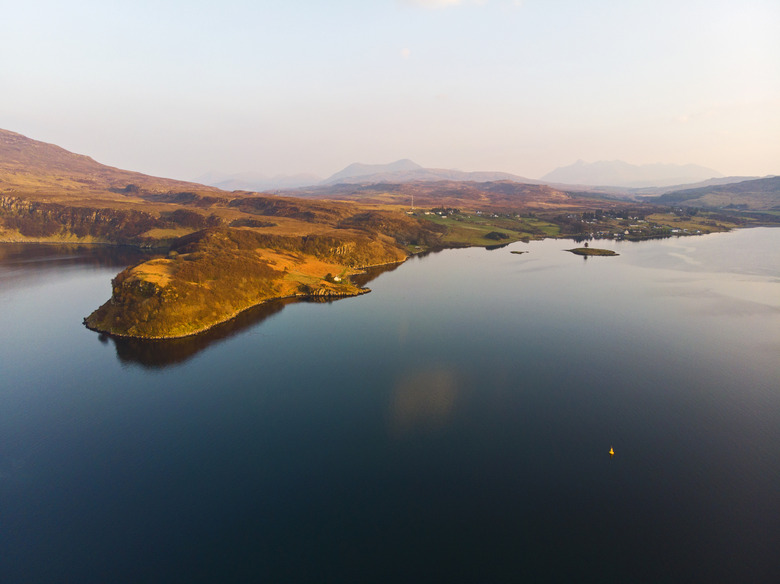Did A New Study Just Reveal The Loch Ness Monster?
There's a New Zealand scientist claiming he has some surprising news about the creature that supposedly lurks in Scotland's Loch Ness. But like many other claims about the purported monster, this one might be a little heavy on sensation and light on proof.
Tourists have been drawn to the shores of the Scottish lake hoping to catch a glimpse of the lake's famous monster, Nessie. For years, alleged proof about Nessie's existence has surfaced, sometimes in the form of photographs, videos or sonar readings.
That proof, though? Most of it was straight-up lies. You have probably seen the infamous blurry photo from 1934 that showed a head and long neck rising above the lake. It turned out to be a complete hoax. Other supposed sightings are more compelling – people have seen unusual waves in otherwise still water, or seen what seems to be a creature moving quickly along the surface of the water – but could also be explained by the presence of other underwater animals or sudden gusts of wind.
Still, that hasn't stopped people from trying to figure out what's in that lake. Which is why, last summer, a team of scientists led by New Zealand professor Neil Gemmell went to Scotland and left with DNA samples from the water. His goal was to analyze those samples, which contain material shed from the creatures within the lake such as skin and waste, and test them against some of the hypotheses about what Nessie – if she exists – could possibly be.
Wait, So, What Is She?
Wait, So, What Is She?
Those hypotheses are varied. Some of the most popular ones suggest that if Nessie is real, it's an animal such as an otter, seal, sturgeon or water bird, perhaps one that has lived long enough with a healthy food supply and no predators to grow unusually large. Some of the less likely hypotheses allege that Nessie is a dinosaur that survived the mass extinction or a mythical creature straight out of Scottish folklore.
Gemmell recently revealed that after analyzing the DNA samples, his team has decided that three of the popular theories are likely not correct. But according to Gemmell, one of the theories could actually be right.
But he hasn't unveiled which of those theories he tested, or which one could be the real deal. He is saving the big reveal for a later, unknown date, and while he was careful not to give away too much, he did make it seem as though the world would continue to believe in some sort of Loch Ness monster.
Well, That’s Kind of a Letdown
Well, That's Kind of a Letdown
It kind of is!
Maybe we won't feel that way when Gemmell and his team eventually give us more details about what's in Loch Ness. But even if his results don't uncover an ancient and mythical underwater monster, they could go a long way in helping us learn more about the biodiversity in one of Scotland's largest, deepest freshwater lakes.
Gemmell and his team found 15 different species of fish and as many as 3,000 species of bacteria in the lake. Learning more about any underwater species can help us as work to protect the plants and animals in bodies of water around the world. In that sense, any kind of study into Loch Ness can be beneficial for marine conservation, even if it doesn't uncover Nessie.
Still, we're staying tuned for monster news.
Cite This Article
MLA
Dragani, Rachelle. "Did A New Study Just Reveal The Loch Ness Monster?" sciencing.com, https://www.sciencing.com/did-a-new-study-just-reveal-the-loch-ness-monster-13719448/. 10 June 2019.
APA
Dragani, Rachelle. (2019, June 10). Did A New Study Just Reveal The Loch Ness Monster?. sciencing.com. Retrieved from https://www.sciencing.com/did-a-new-study-just-reveal-the-loch-ness-monster-13719448/
Chicago
Dragani, Rachelle. Did A New Study Just Reveal The Loch Ness Monster? last modified March 24, 2022. https://www.sciencing.com/did-a-new-study-just-reveal-the-loch-ness-monster-13719448/
